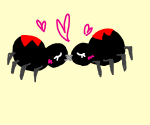I’ve pointed out before how creationists like to butcher quotes from scientists to completely change their meaning, in a practice called quote mining. Guess who else does this?
Jordan Peterson. Tell me you’re surprised.
He and his publisher spattered the back cover of his latest book, Beyond Order, with blurbs from reviewers that praised it highly…or did they?
Another objection came from The Times reviewer James Marriott, because the blurb included from his review quoted him calling the book “A philosophy of the meaning of life… the most lucid and touching prose Peterson has ever written.”
In a now-deleted X post, Marriott noted that the ellipse covered up that his full sentence was “A philosophy of the meaning of life which is bonkers.”
“My review of this mad book was probably the most negative thing I have ever written,” Marriott said. He later added that he was amused by the situation, “Though my amusement is tinged with annoyance at being misrepresented to the tens of thousands of people who will buy that book in paperback.
Oh man, you can’t trust Jordan Peterson? Shocking.










